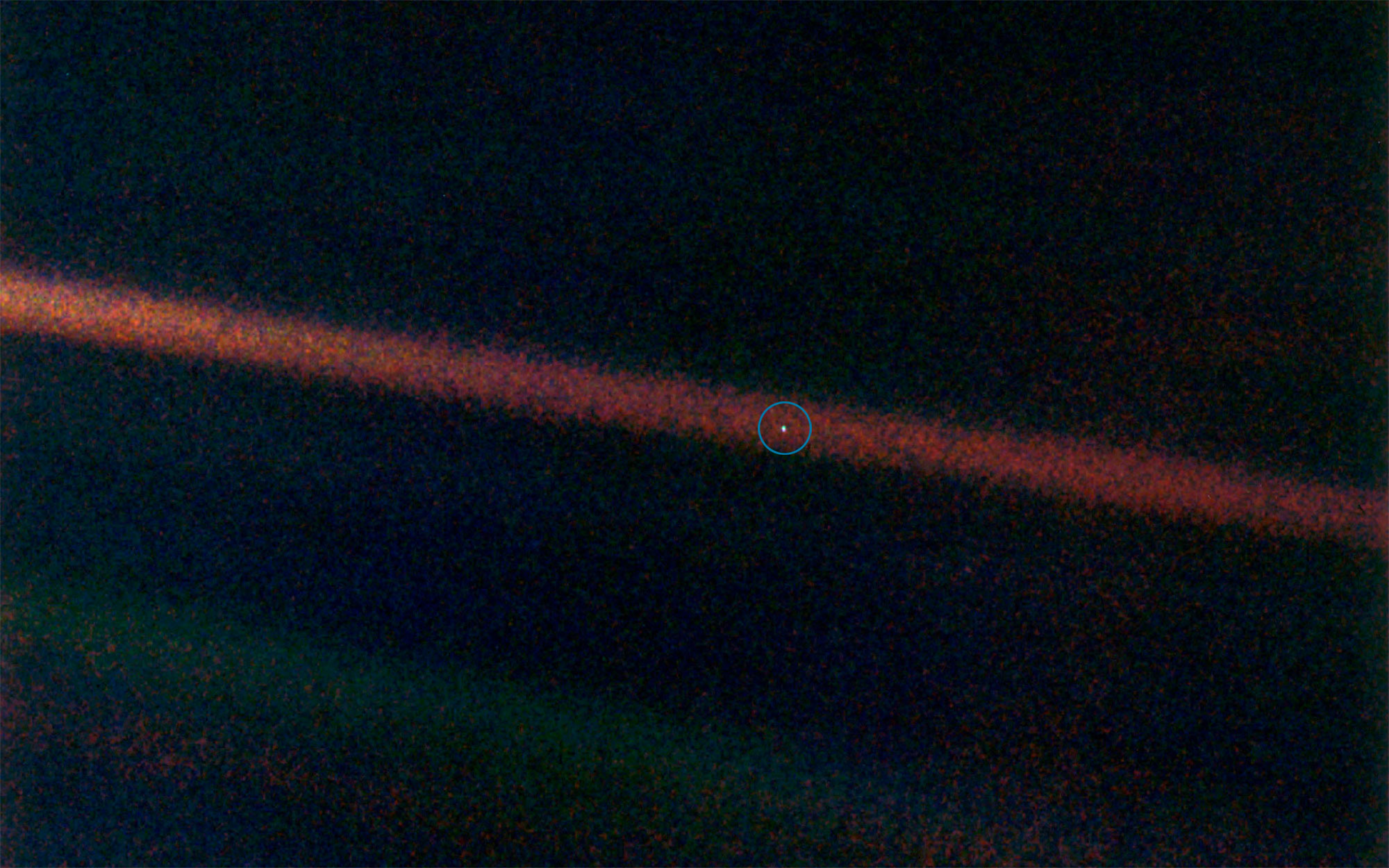As incredible as the scale of our galaxy may seem, the Milky Way is only one of more than 100 billion galaxies in the observable universe. Just as it would take thousands of years to count the stars in the Milky Way, it would take thousands of years to count all the galaxies.
Think for a moment about the total number of stars (and planets) in all these galaxies. If we assume 100 billion stars per galaxy, the total number of stars in the observable universe is roughly 100 billion × 100 billion, which is 10,000,000,000,000,000,000,000 (1022). How big is this number? Imagine visiting a beach and running your hands through the fine-grained dry sand. Imagine counting each tiny grain of sand as it slips through your fingers. Then imagine counting every grain of dry sand on the beach and continuing to count every grain of dry sand on every beach on Earth. If you could actually complete this task, you would find that the number of stars in the observable universe is similar to or larger than the number of grains of sand on all Earth’s beaches combined.

Journal Entry
It’s Astronomical (or not)
Return to the page in your journal in which you have written down statements that use the word “astronomical.” Hopefully you saved a little space below each statement. Now, use that space to write a sentence or two after each statement in which you explain whether or not you think the word “astronomical” was an exaggeration compared to its true meaning in astronomy.
Video
The Universe in Powers of 10
Another way to think about the scale of the universe is to imagine stepping through it in powers of 10. Here is a famous video that takes you on a brief tour through the universe in this way.
Wow Factor
A Pale blue dot

Look back at the “pale blue dot” photo (Figure 1.14), which was taken at the suggestion of the astronomer Carl Sagan (1934–1996). Now that you have completed our brief tour of the scale of the universe, what thoughts come to mind when you look at how tiny our planet looks from a distance? First think about this for yourself, then read the following words that Dr. Sagan wrote about what the image meant to him:
Look again at that dot. That’s here. That’s home. That’s us. On it everyone you love, everyone you know, everyone you ever heard of, every human being who ever was, lived out their lives. The aggregate of our joy and suffering, thousands of confident religions, ideologies, and economic doctrines, every hunter and forager, every hero and coward, every creator and destroyer of civilization, every king and peasant, every young couple in love, every mother and father, hopeful child, inventor and explorer, every teacher of morals, every corrupt politician, every “superstar,” every “supreme leader,” every saint and sinner in the history of our species lived there – on a mote of dust suspended in a sunbeam.
The Earth is a very small stage in a vast cosmic arena. Think of the rivers of blood spilled by all those generals and emperors so that, in glory and triumph, they could become the momentary masters of a fraction of a dot. Think of the endless cruelties visited by the inhabitants of one corner of this pixel on the scarcely distinguishable inhabitants of some other corner, how frequent their misunderstandings, how eager they are to kill one another, how fervent their hatreds.
Our posturings, our imagined self-importance, the delusion that we have some privileged position in the Universe, are challenged by this point of pale light. Our planet is a lonely speck in the great enveloping cosmic dark. In our obscurity, in all this vastness, there is no hint that help will come from elsewhere to save us from ourselves.
The Earth is the only world known so far to harbor life. There is nowhere else, at least in the near future, to which our species could migrate. Visit, yes. Settle, not yet. Like it or not, for the moment the Earth is where we make our stand.
It has been said that astronomy is a humbling and character-building experience. There is perhaps no better demonstration of the folly of human conceits than this distant image of our tiny world. To me, it underscores our responsibility to deal more kindly with one another, and to preserve and cherish the pale blue dot, the only home we’ve ever known.
– Carl Sagan (1934-1996)
If you wish for this subsection, you can make an activity out of showing that the number of stars is comparable to the number of grains of sand on all Earth’s beaches combined. To do so:
- Bring in some sand, and carefully measure out 1 cubic centimeter of it. Then divvy it up among your students so they can count the total number of grains in this cubic centimeter; depending on the sand you use, the result should be somewhere between about 1,000 to 10,000 grains. Note: if you have fine-grained sand that is leading to the high side, you can ask the students to count, say, only 0.1 cubic centimeter (and then multiply the result by 10 to find the number of grains in 1 cubic centimeter).
- This will tell you the typical density of sand in grains per cubic centimeter; for example, if the students counted 4,000 grains, then the density is 4,000 grains per cubic centimeter. You can then help your students convert this density to units of grains per cubic meter, which simply requires multiplying by 1 million (because there are 1 million cubic centimeters in a cubic meter).
- Then have students estimate the typical width and depth of dry sand at a beach. You might steer them to estimates of 50 meters width and 2 meters depth, since that gives a simple cross-sectional area of 100 square meters.
- The trickier part is estimating the total length of sandy coastline in the world. You can in principle try measuring coastline on a globe, but it will be very inaccurate. Instead, we recommend simply giving the students a length estimate, which according to the “CIA Factbook” is that there is a total length of about 360,000 kilometers, or 360 million meters, of sandy beach on Earth.
- Now, multiply the length of 360 million meters by the width and depth estimates to find the total volume of dry sand on all Earth’s beaches, then multiply this by the density your found (per cubic) meter to get the total number of grains of sand. You will almost certainly get a final answer smaller than the number of stars in the observable universe.